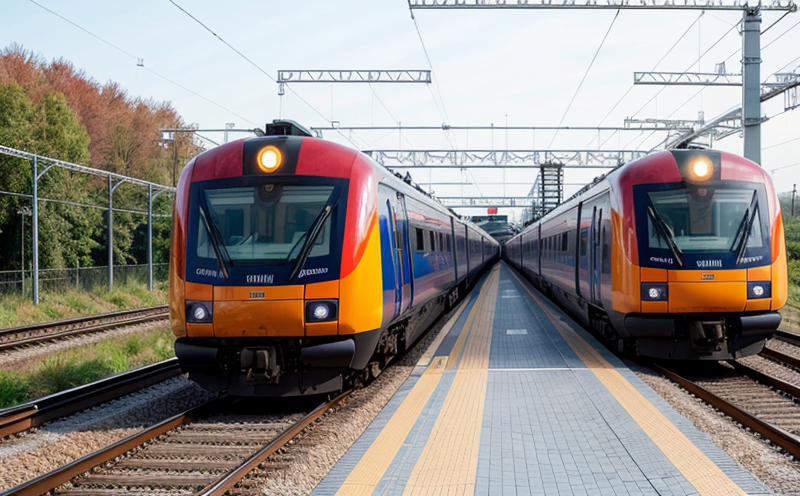EN 302 326 Fixed Radio Relay Testing for Smart Railway Communication
The European Standard EN 302 326 is pivotal in ensuring the reliability and robustness of fixed radio relay systems used in smart railway communication. This standard specifies the technical requirements, test procedures, and acceptance criteria essential for validating the performance of these critical components within railway communications infrastructure.
Fixed radio relays are indispensable elements in modern railway networks, facilitating seamless data transfer between ground-based stations and moving train units. They play a crucial role in supporting real-time communication services such as voice calls, video conferencing, and data transmission for train control systems. The standard ensures that these relays meet stringent quality standards, which is vital for maintaining the safety and efficiency of railway operations.
Under EN 302 326, testing encompasses a wide range of parameters to ensure that fixed radio relays function optimally under various environmental conditions and operational scenarios. This includes evaluating signal strength, interference resilience, data throughput rates, latency, and reliability across different frequency bands. Compliance with this standard guarantees that the equipment is capable of handling high volumes of traffic while maintaining low error rates.
The testing process involves rigorous simulation of real-world operating environments to assess performance under extreme conditions such as temperature fluctuations, humidity variations, electromagnetic interference (EMI), and signal degradation due to distance. Additionally, the standard requires thorough validation of the relay's ability to maintain consistent quality even when faced with network congestion or unexpected disruptions.
Compliance with EN 302 326 is not only essential for meeting regulatory requirements but also enhances the overall safety and efficiency of railway operations. By ensuring that fixed radio relays meet these stringent standards, operators can minimize downtime, reduce maintenance costs, and improve passenger experience by providing reliable communication services.
Industry Applications: The application of EN 302 326 extends beyond just the railway sector into broader transportation networks and infrastructure projects. It ensures that fixed radio relays used in urban public transport systems, smart city initiatives, and other critical infrastructure applications also meet the same high standards.
| Industry | Application |
|---|---|
| Urban Public Transport | Ensuring reliable communication between buses/trams and central control units |
| Smart City Infrastructure | Supporting IoT devices in urban areas for enhanced mobility services |
| Broadcasting | Facilitating secure transmission of video feeds from remote locations to broadcasting centers |
| Telecommunications Providers | Sustaining high-speed data transfer between network nodes |
Use Cases and Application Examples: Real-world deployments of fixed radio relays compliant with EN 302 326 include:
- Implementing smart traffic management systems in densely populated urban areas to optimize flow and reduce congestion.
- Deploying secure communication channels for remote control centers managing large-scale public transportation fleets.
- Setting up robust network infrastructure for supporting emergency services during critical incidents.
The standard’s emphasis on signal integrity and interference rejection makes it particularly relevant in environments where multiple communication systems operate simultaneously. This ensures that all stakeholders receive clear, uninterrupted signals essential for effective operation and safety.
Environmental and Sustainability Contributions: By ensuring reliable communication infrastructure, EN 302 326 contributes significantly to environmental sustainability through reduced fuel consumption and lower emissions associated with improved traffic flow and optimized resource usage. Additionally, the standard supports initiatives aimed at reducing energy consumption by promoting efficient data transfer protocols.
- Reduces carbon footprint by optimizing transport routes
- Promotes the use of renewable energy sources in transportation systems
- Supports smart city goals through integrated infrastructure solutions
- Fosters innovation in communication technology for sustainable development
Frequently Asked Questions





